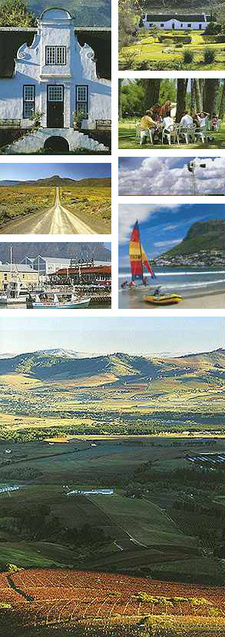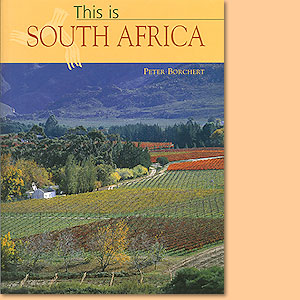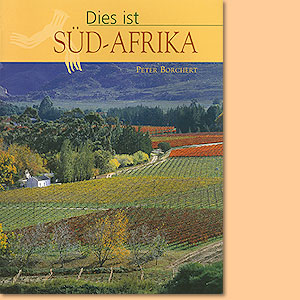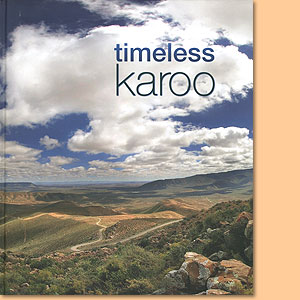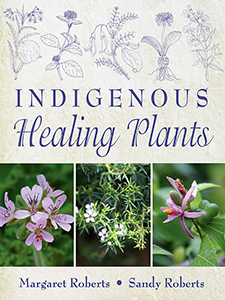This is South Africa, by Peter Borchert
South African Profile: The association of a people with the land they live in is always difficult to understand. This is particularly so in countries where national, regional and local affairs, together with a number of strong cultural identities create an intricate web of allegiances and affiliations.
At this point in its history, South Africa is even more complex than most as it enters the new century, albeit sometimes rather uncertainly, but with a sense of great hope, the likes of which the country and all its people have never before experienced. Re-admittance into the world community and the relative speed, peace and goodwill with which the country has created a new order have been heady experiences.
A feeling of common purpose and national pride pervades, but it does not entirely mask the political and social divisions that lie beneath the thin veneer, and it would be a brave person, and probably a fairly stupid one, who would venture a tight definition and declare with confidence that This is South Africa. Even an introductory essay such as this certainly will, inevitably, run a gauntlet of criticism for bias, omission, over-simplification and prejudice.
For how can one tell the story of South Africa completely and to the satisfaction of all in the space of a few thousand words? Quite simply one cannot, and the text and captions for this book make no pretence at doing so. All that is offered is a series of glimpses, some more personal, others more broadly based, that will give the casual reader, particularly the newcomer or tourist, a few pointers to this endlessly fascinating and very lovely land of endless opportunity. So far the introduction of Peter Borchert from an insider's perspective.
The shaping of South Africa
South Africa is a very big country. Even its subdivisions into nine provinces are mostly sizeable, the exception being the densely populated economic and financial power-house of Gauteng, an almost continuous conurbation formed around the two major cities of Johannesburg and Pretoria.The land, 1,2 million square kilometres in extent, sprawls from the Limpopo River in the north to the southern extremity of Cape Agulhas, where Africa peters out rather unimpressively in a jumble of low, windswept sand dunes and shallow reefs.
South Africa's western shores are scoured by the cold waters of the Benguela Current driving up from the Antarctic, its eastern areas by the warm waters of the Agulhas Current sweeping down from the tropical Indian Ocean. Even though one would expect a fair variety of landscapes in a country as large as South Africa, it is difficult to comprehend just how much physical diversity there is.Reduced to simple terms, however, three major features determine the shape and the form of the land: a coastal plain that fringes the entire subcontinent; a vast inland plateau and, separating the two, an irregular chain of rugged mountains which, here and there, rather begrudgingly allows road and rail access between the coast and the interior.
In the east, and forming a great, virtually continuous escarpment running down from the Limpopo Province, across the northern limits of KwaZulu-Natal and then on into the Eastern Cape, is the mighty Drakensberg range. In KwaZulu-Natal, where the Ouathlamba - the Zulu name for the range (the word means 'barrier of spears') - soar to heights of more than 3000 metres, this alpine wilderness is at its most spectacular.In winter thick snow can blanket the peaks and often the lower slopes, briefly softening the rough face of Africa. But for most of the year the crags are bare and challenging, inviting legions of climbers and hikers.
In the Western Cape the mountain ranges are no less dramatic, but were borne of very different forces. More than 300 million years ago, when the continents were wrenching themselves free of the single land mass known as Pangaea, the heaving and buckling earth threw up a range that would have dwarfed the Himalayas, and, although now a fraction of their former height, the legacy of the unimaginable forces that created them can be seen in the contorted rock strata of what are collectively known as the Cape Fold Mountains.On the seaward side of this escarpment the land is comparatively well watered: the Western Cape receives its share of rain mostly in winter, and the long months of summer are hot and dry: the subtropical east coast is subject to often monsoon-like summer downpours, creating sticky, steaming days with the evenings providing little relief. Along the southern coast, where forests - man-made and indigenous - clothe the landscape, the weather, mild for the most part, can be wet at any time of the year.
But rain is an irregular happening in Africa and the spectre of drought always looms. Although the coast can be hard hit, nowhere is the threat more real than on the vast inter- ior plateau. Here, especially in the central and western parts, the rain falls sparingly even in the kinder seasons, dry periods sometimes lasting several years. During these times life is hard indeed. It is just such a waterless period that has followed many parts of Africa into the 1990s, causing crop failures, the death of livestock and game, and human misery on an unprecedented scale.The South African hinterland - the plateau - is far from uniform in character and much of it is occupied by the Great Karoo. For some it is a bleak semi-desert to be traversed as quickly as possible, a penance for those headed for the pleasures of the seaside or returning home to the metropolises of the north, but for others the endless scrubby plains, punctuated here and there with typically flat-crowned hills, or koppies, have a beauty all their own, where the sense of solitude can be an almost spiritual experience.
To the north of the Karoo the land continues to rise steadily in a series of low scarps across the Gariep (Orange) River, through the flat farms and goldfields of the central Free State and on over the Vaal River. Here the farms give way abruptly to mining, industry and the biggest coming together of people south of Cairo.This is Gauteng, a closely knotted string of towns, cities and suburbs with Johannesburg and Soweto at the centre, Pretoria in the north and Vereeniging in the south. Although a mere 1.4 per cent of South Africa's total area, nearly seven million people crowd into the conurbation. The only province with a greater population is KwaZulu-Natal which is some five-and-a-half times its area. (...)
This is an extract from the book: This is South Africa, by Peter Borchert
Book title: This is South Africa
Author: Peter Borchert
Struik Publishers
Cape Town, South Africa 2000
ISBN: 1859742653
Hardcover, dustjacket, 21x28 cm, 160 pages, throughout colour photos
Borchert, Peter im Namibiana-Buchangebot
This is South Africa
This is South Africa provides a visual essay on the country, its peoples and cultures.
Dies ist Südafrika
Dies ist Südafrika ist ein zeitloser und gut gemachter Südafrika-Bildbandklassiker.
Weitere Buchempfehlungen
Shades
'Shades' is a novel of huge integrity that represents a valuable contribution to a new direction in contemporary South African literature.
Timeless Karoo
Timeless Karoo ist ein bezaubernder Bildband, der die spröde Karoo ins rechte Licht rückt und ihre Schönheit und Geschichte ausführlich beschreibt.
Indigenous Healing Plants
This ethnobotanical plant guide introduces to the various uses of more than 140 indigenous plants of Southern Africa.

